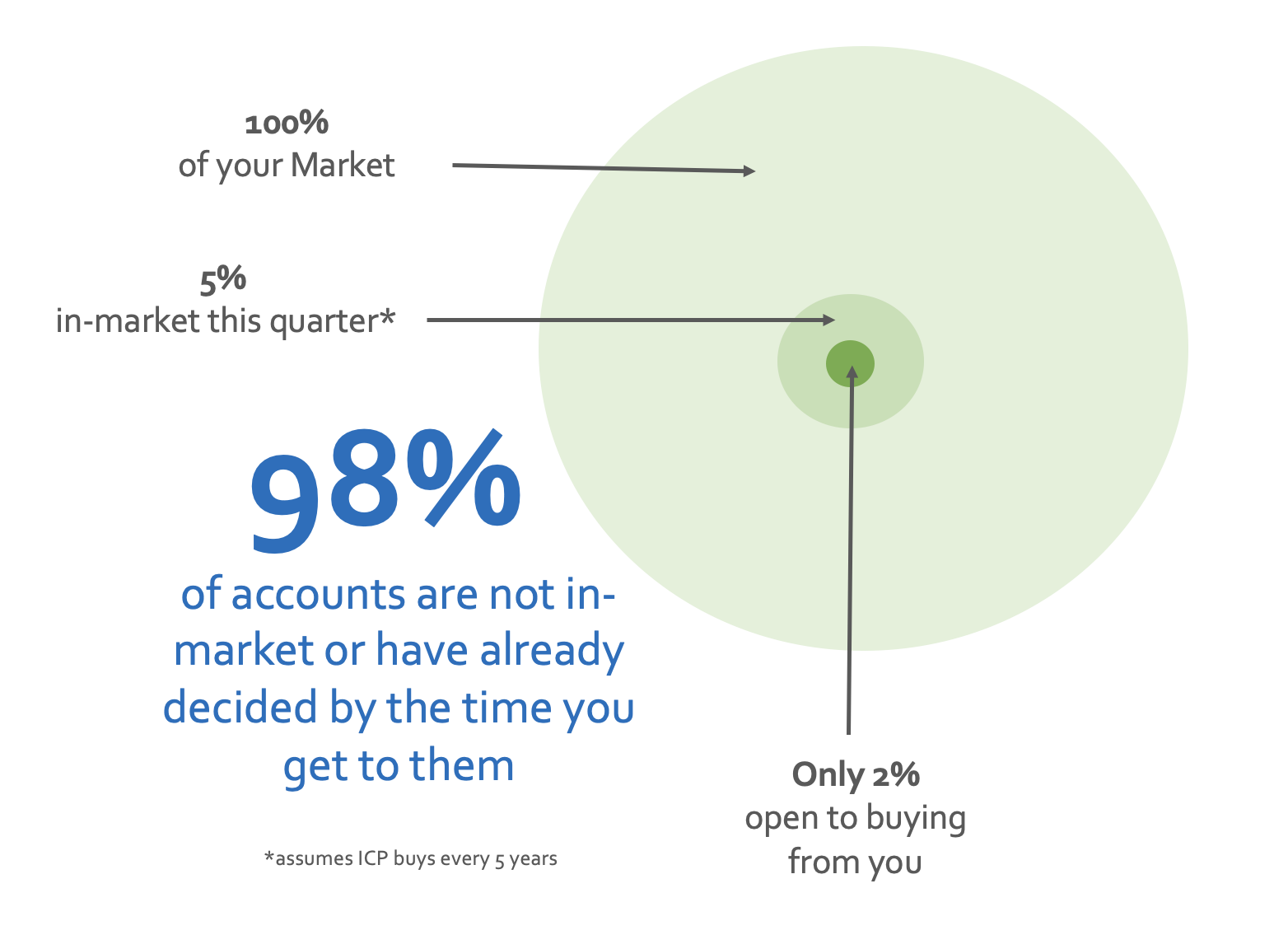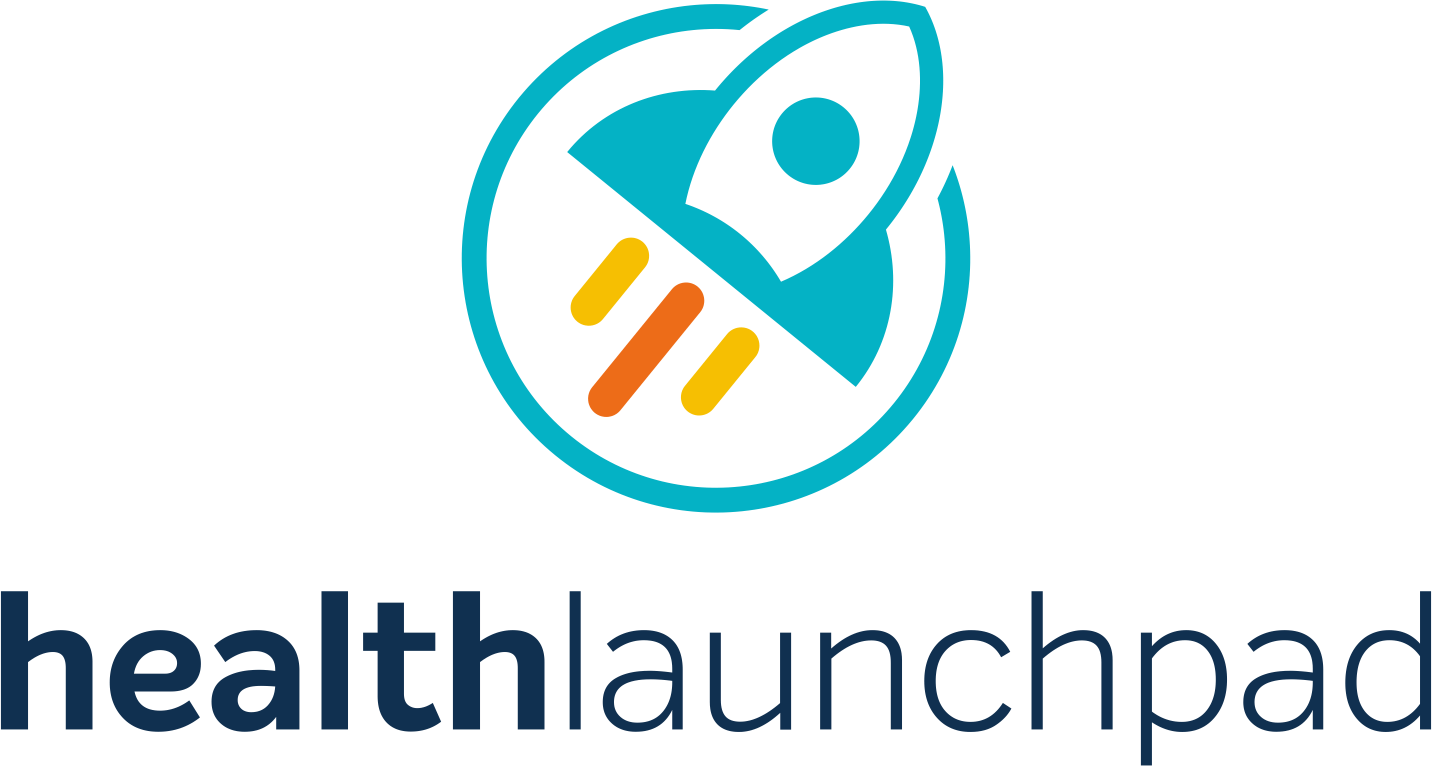Using ABM Principles to Generate Sales Pipeline More Efficiently
In this post, I will review our ABM demand generation framework and how we use the principles of ABM to identify in-market accounts, engage them, and turn them into opportunities. We also share a little about the ABM Demand Generation solution we include as part of our service.
The Problem with B2B Demand Generation
The biggest problem with traditional B2B demand generation frameworks is that they can be wasteful.
Here is why.

Typically, organizations re-evaluate their software or service providers every five years. In any given year, this means that only 20% of your total available market (TAM) is in the market for a new solution. Moreover, this means that only 5% may be in-market in any given quarter.
And by the way, it’s worse than this.
According to Gartner CEB research, 57% have already decided by the time they reach out to a vendor. So potentially, only 2% of the market may be open to hearing from you if you are not already in their consideration set.
So, if you generate demand across the entire total available market, as much as 98% of your marketing efforts could be wasted in accounts that are not interested in buying from you right now.
We would like to propose a better demand-generation framework
Using Principles of ABM in How You Generate Demand
One of the key principles of modern Account-Based Marketing is to be intentional about which accounts you target. Part of this is having a Target Account List (TAL) of “Best-fit” accounts that meet your criteria of an ideal customer.
Secondly, using intent data to identify high-opportunity accounts. This is data that signals that an account may be in-market to buy. There are three types of intent data:
- First-party intent data – Buying signals from potential customers based on interactions by accounts on your website or social media channels and responses to your emails.
- Second-party intent data – This is data from websites that help companies compare vendors such as G2 or Capterra.
- Third-party intent data – This data aggregates buying signals across thousands of B2B websites and helps identify accounts that may be in-market for your solution. This data is often integrated into ABM and demand generation solutions like Demandbased and Terminus.
Our 4-Step ABM Demand Generation Framework

Over the last two years, we have refined our approach to help clients build a bigger sales pipeline to include an ABM demand generation framework. This employs best practices in demand generation marketing and lead generation combined with modern ABM principles.
Our ABM demand generation solution, Propensity, provides clients with first and third-party intent data. This includes a customizable demand-generation solution, including different types of marketing playbooks.
Here are the four steps in our ABM demand generation framework.
Step 1 – Pinpointing In-market Accounts
The goal of this step is to build an in-market account list. In collaboration with the client, we create an in-market list. This is based on accounts matching the client’s target account firmographics and buying signals using different types of intent data.
This list is dynamic and throughout a campaign, additional signals will be seen based on responses to ads and emails, plus visits by target accounts to the client’s website.
Part of this stage includes building buyer circle contact lists. We do this in Propensity, either using titles that match the buyer circle or by creating personas using LinkedIn profiles. The individual contacts that match the buyer circle will be the target audience for the next step.
The outcome is a tight list of contacts that match the buyer circle across in-market accounts.
Step 2 – Warming up the Buyer Circle
Next, we launch a campaign to create awareness and build interest with the tightly targeted audience created in Step 1. The aim is to “warm up” the audience before generating leads.
We design a multi-channel multitouch ABM campaign that can include programmatic ads, LinkedIn, and even Facebook ads combined with email and social media. These will all be targeted at the buyer circle contacts identified in Step 1.
By the way, the ABM demand generation solution we use includes a variety of pre-populated playbooks.
We create ads that leverage the content marketing strategy, including ads that drive to blog posts and marketing landing pages.
In the campaign dashboard, we capture which contacts have engaged and score these as early-stage leads. We aim to identify which accounts are showing the highest level of engagement and which contacts seem to be receptive to our messaging.
Step 3 – Generate High Intent MQLs
Next, we ramp up lead generation. We do this with lead generation ads, email marketing, and syndicated content lead generation targeted at the buyer circle from step 1. We double down on the highest opportunity leads identified in Step 2.
The aim is to generate a list of high-quality leads. We call these High Intent Marketing Qualified Leads (High Intent MQLs)
Step 4 Convert into High Intent SQLs
The final stage is to support the SDRs and the sales team by converting these High Intent MQLs into High Intent Sales Qualified Leads (SQLs). This is a collaborative effort between marketing and sales teams.
Typical tactics include lead nurturing email sequences and phone scripts.
The key thing is the partnership with the SDRs to personalize the outreach. We do this by providing the SDRs with detailed information about the High Intent MQLs, including their social media profiles.
This helps the SDRs tailor their outreach and social selling.
The Outcome is a steady flow of accounts converting into opportunities and more efficient use of marketing budgets.
It’s surprising how much pipeline you can create with a limited ad spend.
Do You Want to Learn More?
We are helping many healthtech clients grow their sales pipeline. If you want to learn more and see how this approach could work for you, let’s schedule a call.
If you liked this post and want to learn more…
- Check out more posts like this in the Healthtech MarketingLearning Center. It is chock-full of articles, use cases, how-to’s, and ideas to get you started on your ABM journey.
- Follow me or connect with me on LinkedIn. I publish videos and articles on ABM and healthtech marketing.
- Buy Total Customer Growth: Our book on how to win and grow customers for life with ABM and ABX.
- Work with me directly. Let’s book a growth session and we can explore ways you can improve your marketing using the latest techniques in account-based marketing.

